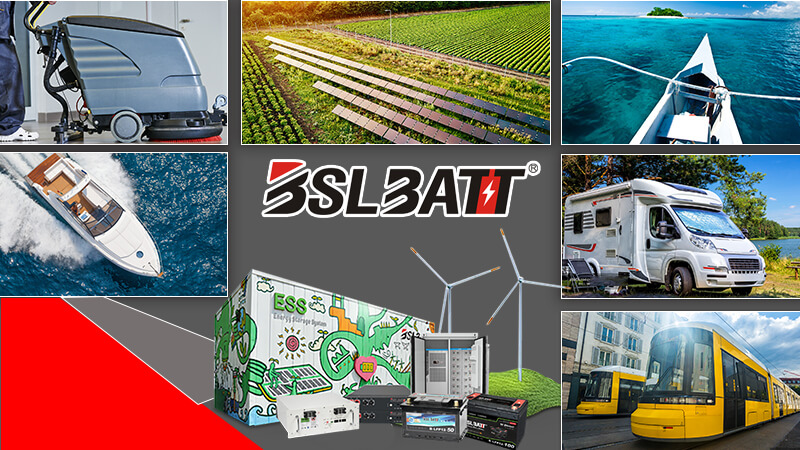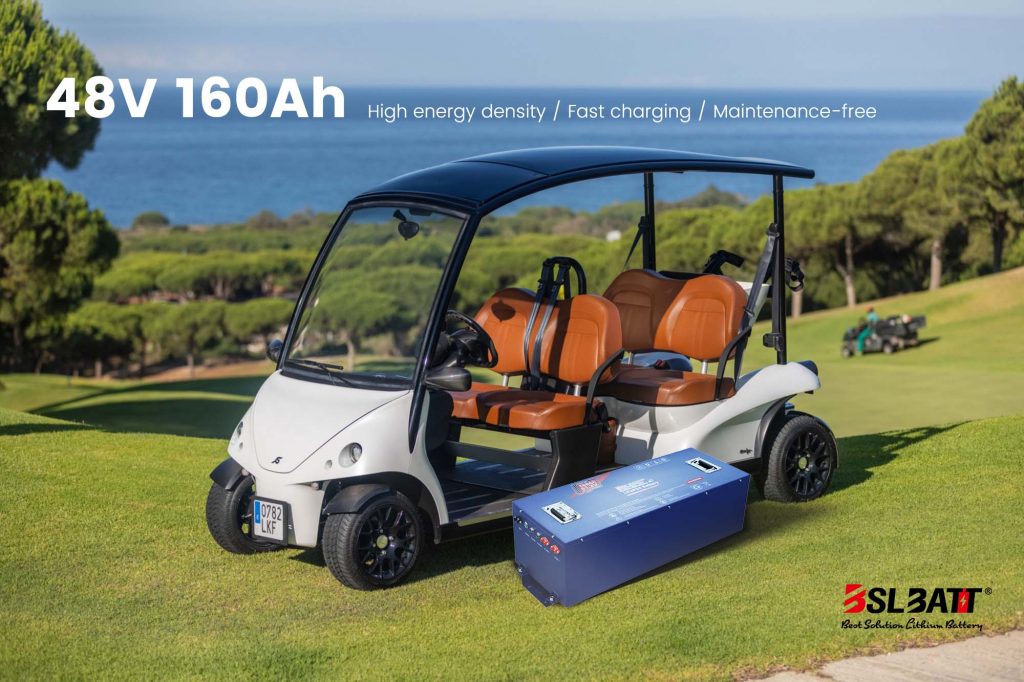Industry Application
Product Type
Moving To Lithium Batteries: How To Make The Switch
Making The Transition To Lithium-Ion In 5 Simple StepsThe substantial benefits that Lithium Ion technology offer over lead-acid technology means that using Lithium Ion batteries is becoming an ever more popular choice. When considering replacing an existing lead-acid battery bank by a Lithium Ion battery bank one needs to take a couple of things into consideration. Although the term ‘drop-in replacement’ is occasionally used in this case, it is actually never as simple as that. However, making that transition happen for your facility or field application isn’t always seamless – unless you know the right steps.
Now, those steps are simpler and clearer than ever. Here’s your step-by-step guide to making the switch from lead acid batteries to full lithium power: Why Make The Switch? There are many benefits to lithium batteries, including: CHARGING THE BATTERY Lead Acid battery: The charging efficiency of this type of battery is low – only 75%! A lead-acid battery needs more energy for recharging than it delivers. The excess energy is used for gasification and for mixing the acid internally. This process warms up the battery and evaporates the water inside, which results in the need to top up the battery with distilled (demineralised) water. Lead-acid recharging has severe limitations and a number of critical points. Here are the most important ones: ● Fast or partial charges ruin a lead-acid battery ● Charging times are long: from 6 to 8 hours ● The charger does not collect full information on the battery. It only checks the voltage, and that’s not enough. Changes in temperature affect the recharge profile, so if the temperature is not measured, the battery will never charge completely in winter and will gasify too much in summer ● An incorrect charger or setting reduces battery life ● Poor maintenance will also reduce battery life Lithium ion battery: Lithium-ion batteries can be “fast” charged to 100% of capacity. A lithium battery saves on your electric bill, as it is up to 96% efficient and accepts both partial and rapid charging.
A lithium battery can be charged to 50% capacity in only 25 minutes. This innovative characteristic enables our customers to equip their devices with lower installed battery capacity than the capacity required with lead-acid batteries, because lithium batteries can be recharged repeatedly over a short time Electronic systems inside the battery control the charger effectively, so it can deliver the exact current that is consistent with internal parameters (voltage, temperature, charge level, etc …). If a customer connects an unsuitable battery charger, the battery will not activate and is thus fully protected. MAINTENANCE Lead acid battery: high maintenance and systems costs. Ordinary maintenance is one of the greatest costs, as it includes topping up the water, maintaining the filling system, and removing oxide from the elements and terminals. It would be a serious mistake not to take into consideration 3 other, hidden costs: Infrastructure cost: lead-acid batteries release gas while they are charging and must therefore be charged in a dedicated area. What is the cost of this space, which could be used for other purposes? Cost of gas disposal: the gas released by lead-acid batteries must not remain inside the charging area. It must be removed to the outside by special ventilation systems. Cost of water demineralisation: in smaller companies, this cost can be included in ordinary maintenance, but becomes a separate expense for medium to large companies. Demineralisation is a necessary treatment for water used to top-up lead-acid batteries. Lithium ion battery: no infrastructure cost, no gas and no need for water, which eliminates all additional costs. The battery just works. Longer battery life span: Lithium batteries last ten times longer than lead acid batteries. without losing effectiveness over time. Lighter weight: On average Lithium-Ion batteries weight 5 times less than standard lead acid battery, making them more portable and easier to replace. Greater durability: Lithium batteries tolerate greater levels of heat and vibration than lead acid batteries. SAFETY, WATERPROOFING AND EMISSIONS Lead acid batteries have no safety devices, are not sealed, and release hydrogen during charging. In fact, their use in the food industry is not permitted (except for “gel” versions, which are even less efficient). Lithium batteries release no emissions, are suitable for all applications (also available in IP67) and feature 3 different control systems that protect the battery: 1. Automatic disconnection, which disconnects the battery when the machine/vehicle is idle and protects the battery from improper use by the customer 2. Balancing and management system which maximizes battery efficiency 3. Remote control system with automatic warning of troubles and malfunctions
So, are you ready to make the switch to lithium for your personal or business needs? Here are the steps to make your transition seamless: Step 1: Find The Right Battery DistributorWhen you’re making the move to lithium-ion batteries, you need a battery distributor with the stock, service and know-how to meet all of your needs. The right distributor should be backed by years of experience and offer remarkable assurances and warranties on the lithium batteries they ship. If your distributor doesn’t have a strong standing, the batteries you receive from them aren’t likely to last, so find a battery distributor with a reputation that’s as stellar as their batteries. Step 2: Get An On-Site ReviewSometimes fixing and furnishing all of the details of a battery transition on your own isn’t the best idea. In reality, you should let a lithium battery expert give you a detailed assessment of exactly what you need to power your vehicles or other applications with lithium. Take the guesswork out of your lithium switch, and schedule your on-site review. Not only will you save money on purchasing the right battery and equipment the first time, but you’ll also save the headache of having to figure it out for yourself. Step 3: Switch Over Your Charge SourceLithium batteries require a different charge source than lead acid batteries. Before installing your new lithium-ion batteries, make sure you have a charger with an absorbent glass mat (AGM) or lithium charge setting. This step ensures that your new batteries charge correctly, safely and efficiently. Step 4: Be Aware Of Voltage LimitationsWith lithium power, there are voltage limitations for batteries with any of the standard sizes set by the Battery Council International (BCI). So, if you plan to use lithium batteries in standard BCI sizes, make sure you are aware of any voltage limitations. For any system that’s 48 volts or higher, BSLBATT Lithium highly recommends looking into a custom battery pack to ensure your lithium battery works effectively with known voltage limitations.
Step 5: Enjoy Your New Time And Cost SavingsAfter making the switch to lithium battery power, you can breath easy, knowing your investment is going to pay substantial dividends in terms of time and cost savings. Not only do you have less maintenance and replacement costs to worry about, but your new energy generation source is also one of the cleanest forms of energy around. Switching to lithium-ion batteries is your best bet for clean, efficient energy moving forward. Now, with this step-by-step guide to a seamless switch from lead acid to lithium batteries, you have everything you need to power your transition. Is it time for lithium? I think we will see more BSLBATT lithium battery systems in the near future, especially for those who like clean energy but don’t want to deal with generator sets. Yes, lithium-the battery of the future, can be bought today. |
A Guide to Choosing the Best 48V Lithium Golf Cart Battery
Would it be worth investing in a 48V ...
10 Exciting Ways To Use Your 12V Lithium Batteries
Back in 2016 when BSLBATT first began designing what would become the first drop-in replacemen...
BSLBATT Battery Company Receives Bulk Orders from North American Customers
BSLBATT®, a China Forklift battery manufacturer specializing in the material handling indust...
Fun Find Friday: BSLBATT Battery is coming to another great LogiMAT 2022
MEET US! VETTER’S EXHIBITION YEAR 2022! LogiMAT in Stuttgart: SMART – SUSTAINABLE – SAF...
Looking for new Distributors and Dealers for BSL Lithium Batteries
BSLBATT battery is a fast-paced, high-growth (200% YoY ) hi-tech company that is leading the a...
BSLBATT to Participate at MODEX 2022 on March 28-31 in Atlanta, GA
BSLBATT is one of the largest developers, manufacturers, and integrators of lithium-ion batter...
What makes the BSLBATT the Superior Lithium Battery for your Motive Power needs?
Electric forklift and Floor Cleaning Machines owners who seek the ultimate performance will fi...

































